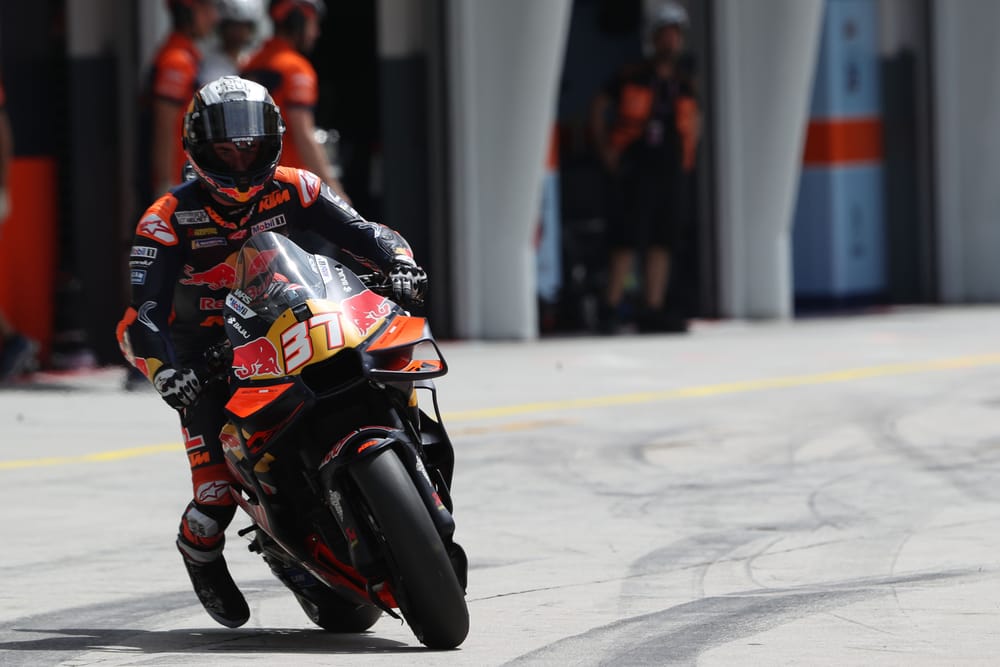Pedro Acosta became the first rider sanctioned under MotoGP's new qualifying rule in the Malaysian Grand Prix at Sepang - and made the case for why the rule is inherently difficult to follow.
It was decided ahead of the Sepang weekend, and communicated in a briefing on Thursday, that riders will no longer be allowed to try to rejoin the session after crashing their bikes in the final three minutes - as this potentially opens the door for unsportsmanlike conduct, as trying to restart the bike from the gravel trap is also a good way of extending the yellow flags at the corner and thus perhaps compromising the laps of rivals still actively pushing on the track.
In Q1, Gresini Ducati rookie Fermin Aldeguer already looked like he might fall foul of it as he tried to pick up his crashed bike, seemingly more with the aim of getting it back to the pits just so that he could have it available for the second qualifying segment.
Aldeguer quickly gave up on the effort, though, before returning to the pits via circuit access roads, which is presumably why he wasn't penalised.
Acosta, however, did successfully rejoin after his crash on his second run in Q2, and even pushed for a fast time, though ultimately couldn't improve on his benchmark.
T1 bites hard for @37_pedroacosta 💥
— MotoGP™🏁 (@MotoGP) October 25, 2025
And he could quickly plummet down the order!#MalaysianGP 🇲🇾 pic.twitter.com/fZNfVTbDER
He ended up fifth on the grid, and was assessed a financial penalty only - €2000 - rather than a competitive one.
Acosta was very animated in explaining the penalty to his peers Brad Binder and Miguel Oliveira ahead of his post-sprint media session - but was much more sanguine in talking about it with the media.
He acknowledged it "was not the best way to finish a Saturday" - though ultimately his Saturday would finish with a different penalty, a tyre pressure sanction for Aldeguer, promoting him to third in the sprint.
"I understand his [chief stewart Simon Crafar's] point, and more or less they understand mine," Acosta explained.
"I arrived there and I said 'yeah, guys, but first of all a rider, when they crash, the last thing that they will do is to see the dash, to see if it's three minutes to go or 3m20s. And also if the marshals are pushing you [back] out, you will not be the one that brakes and stops the bike! It's quite normal, I think - not only for the riders, for everyone.
"And I'm quite lucky, normally I'm always able to restart the bike. OK, they understand my point, I understand theirs. Not very nice, I think, for my bank account - but it is what it is. Could be worse!”
The catalyst for the introduction of the rule was seemingly an Alex Rins Q2 crash at Mandalika that led to extended yellow flags as Rins tried to rejoin the session, even with there being no time left on the clock for him to realistically start another lap.
The lack of competitive sanction for Acosta seems to defeat the point, but The Race understands closer analysis of the session showed that his rejoining did not compromise anyone else's Q2 - so a monetary sanction was deemed sufficient.



